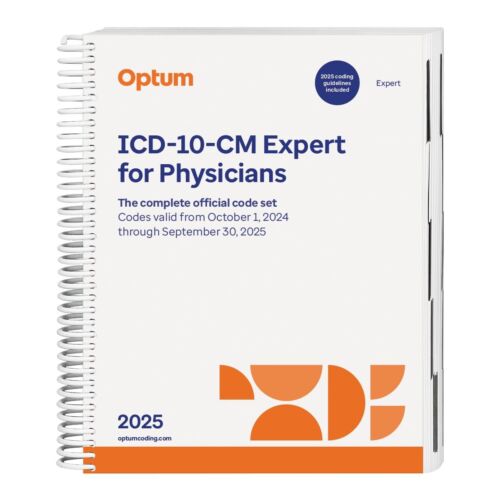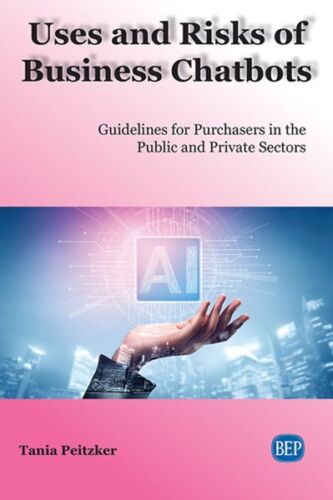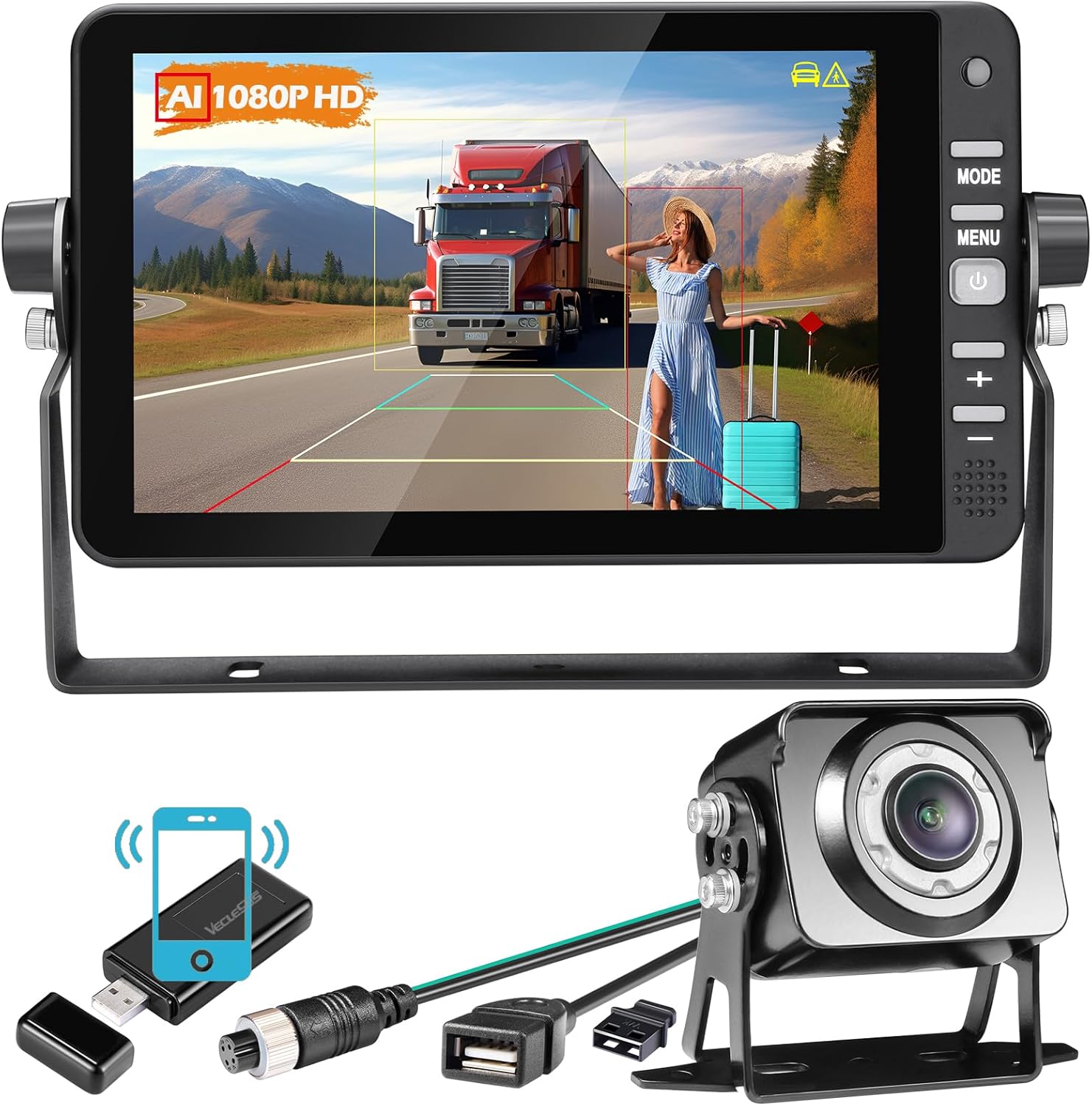Your cart is currently empty!
Tag: Guidelines
Is drinking alcohol bad for your health? New dietary guidelines will weigh risks and benefits
CNN
—
Most adults in the United States drink alcohol, but there is steadily growing public concern about the health effects of moderate drinking.
The latest science supports those concerns, but two recent government reports suggest potential benefits exist alongside potential risks – and some experts say that formal dietary recommendations, due to be reviewed this year, could take a more nuanced approach.
It is well-established that excessive alcohol use, including binge drinking and heavy drinking, has significant negative health effects. But recent studies have found that even low levels of drinking may be harmful, and the World Health Organization has said that “no level of alcohol consumption is safe for our health.”
The current Dietary Guidelines for Americans, from the US Department of Health and Human Services and US Department of Agriculture, say that men should limit their daily alcohol intake to two drinks or less, and one drink or less for women.
These guidelines are up for review this year, and two recent reports meant to inform that process came to seemingly competing conclusions – continuing a longstanding debate on how to weigh the potential risks and benefits of alcohol.
But public attitudes in the US are already changing.
A new CNN poll conducted by SSRS released Friday finds that half of US adults say that moderate drinking is bad for health, more than double the share who said the same two decades ago. Women and adults younger than 45 are more likely than men and older adults to say that moderate drinking is bad for health, as were Democrats and independents.
Just 8% of US adults say that drinking in moderation is good for your health, according to the new CNN poll, about one-third of the share that said the same in 2005. Another 43% of adults say that moderate drinking makes no difference to health.
There is a known link between alcohol and cancer, and any amount of drinking raises that risk. For Surgeon General Dr. Vivek Murthy, this “direct link” was sufficient to issue an advisory and call for an updated health warning label on alcoholic beverages to highlight it.
“Alcohol is a well-established, preventable cause of cancer responsible for about 100,000 cases of cancer and 20,000 cancer deaths annually in the United States – greater than the 13,500 alcohol-associated traffic crash fatalities per year in the US – yet the majority of Americans are unaware of this risk,” Murthy said in a statement earlier this month.
The new CNN poll finds a broad 74% majority of the US public would favor new alcoholic beverage labels warning about the risk of cancer like Murthy suggests. Democrats, women and people of color are especially likely to support a revision of the warning label, but 69% or more adults of all age, gender, partisan and racial groups said they would be in favor.
The CNN Poll was conducted by SSRS from January 9-12 among a random national sample of 1,205 adults drawn from a probability-based panel. Surveys were either conducted online or by telephone with a live interviewer. Results among the full sample have a margin of sampling error of plus or minus 3.2 percentage points.
Weighing risks and benefits
One of the reports meant to inform the next edition of dietary guidelines – requested by Congress and published last month by the National Academies of Sciences, Engineering, and Medicine – reinforced the link between alcohol and cancer, but to varying degrees of certainty. The researchers, who analyzed findings from about two dozen studies, concluded with “moderate certainty” that the risk of developing breast cancer was higher among those who drank in moderation than those who didn’t drink at all. There was “low certainty” that the risk of breast cancer and colorectal cancer were higher for those who drank more in moderation than those who drank less, and no association with other throat and neck cancers.
But the same report also found some potential positive associations between moderate drinking and health. Compared with people who never consume alcohol, those who drink in moderation were at lower risk of heart attack and nonfatal stroke. And overall mortality from any cause was also found to be lower among those who drank in moderation compared with those who never drank.
“Many lifestyle choices carry potential risks, and the consumption of alcohol is no exception,” Michael Kaiser, executive vice president and director of government affairs for WineAmerica, a nonprofit organization that represents the interests of the wine industry, told CNN in an email.
“We encourage all adults who choose to drink to adhere to the Dietary Guidelines and consult with their healthcare providers. No one should drink to achieve health benefits, and some people should not drink at all,” he said, adding that the organization supports the use of this study to inform the guidelines as Congress intended and as previously done.
The other report, published last week by an independent panel convened by HHS’ Interagency Coordinating Committee on the Prevention of Underage Drinking, also found lower risk of stroke among those who had an average of one drink per day, a lower risk of diabetes among women who drink at this level, and increased risk for certain types of cancer.
But it conversely found that the risk of dying from alcohol use begins at low levels of average use and increases as levels of alcohol consumption increases.
Many experts respect the complexity of the science, but warn against viewing drinking alcohol as a categorically healthy habit.
“It’s misleading to say that the science isn’t settled,” said Dr. Katherine Keyes, a professor at the Columbia University Mailman School of Public Health whose research focuses on substance use epidemiology.
“There were differences in methodology and that’s why there are some differences in the results. But when you pull apart the studies, the underlying science is consistent,” said Keyes, who was part of the independent panel convened by HHS. “There are some conditions where we did see a benefit or an inverse relationship at very low levels, but they’re really outweighed by the conditions where you see not a benefit.”
Dr. Ned Calonge, chair of the committee that wrote the National Academies report, warns that the link his group found between lower all-cause mortality and moderate drinking should not be interpreted as a summary of the relationship between alcohol and health – quite the opposite, in fact.

“All cause mortality is, I would say, a problematic outcome, because it includes so many different outcomes, which increases the potential risk of bias associated with things called confounding factors, other factors that might be responsible for the outcome,” said Calonge, who is also an associate dean for public health practice and professor of epidemiology at the Colorado School of Public Health and professor of family medicine at the University of Colorado School of Medicine.
Research on the health effects of alcohol has some significant holes, which contributes to broader possibilities for interpreting the data.
“Moderate” drinking is not consistently defined, and grouping people into different categories – such as zero to three drinks per day – could skew averages when the outcomes may be very different for people at the low end of that category and the high end of that category.
The National Academies report addressed this in their finding about breast cancer risk, noting that higher amounts of drinking are associated with higher risk of breast cancer than lower amounts – even within levels considered to be “moderate.”
The gold standard for scientific research is a randomized controlled trial that actively monitors direct comparisons between scenarios with little external variability, but most studies on alcohol’s effects are based on observation without intervention.
When reviewing findings from observational studies, the strongest conclusions are drawn from strong associations between two factors, Calonge said. But the associations found in the National Academies report – the relative risks in the positive and negative directions – were not very strong, he said.
“We can’t prove cause with observational studies,” Calonge said. “These effects are important from a public health standpoint, but we can’t get above moderate certainty because there could be additional research that has different findings.”
Despite the gaps in research, many experts say the evidence of risk is too strong to be ignored.
“Even if you were to align and agree that a line of evidence is closer to the truth for one disease state, you would then look over and recognize that if you just look at a different disease outcome, the findings might go in a completely different direction,” said Dr. Ahmed Tawakol, a cardiologist at Massachusetts General Hospital.
If a new drug was being studied to reduce heart disease and the clinical trials revealed that it also raised the risk of developing cancer, that drug would never be approved, he said.
“When you use that same frame of mind in reference to alcohol, we’d say that alcohol appears to have some mechanistic actions that are beneficial, but at the same time, it comes at a consequence of really unacceptable side effects,” he said. “It becomes clear that alcohol shouldn’t be considered something that you do for the purpose of health.”
Get CNN Health’s weekly newsletter
Some research suggests that part of the way alcohol use may reduce the risk of heart attacks is the impacts it has on the limbic system, such as limiting stress signals in the brain. But there are less risky ways to achieve that same goal, Tawakol said, such as exercise that comes with multiple benefits.
Still, Tawakol says that he doesn’t usually take a strong stance against alcohol when advising his patients.
“I worry when I see this kind of black and white approach,” he said. “If you choose to drink alcohol, make sure it’s done in moderation, and also put it in the context of other lifestyle factors so that you can further buffer the potential adverse effects.”
Despite broad support of a new warning label on alcoholic beverages, US adults are virtually split on whether the government should provide health recommendations to the public or leave it to Americans to make up their own minds, according to the new CNN poll.
And many are already making their own choices. About 4 in 10 adults say that they don’t drink at all, while about 1 in 8 say that they’ve participated in Dry January – with more than half of that group saying they’re doing so this year. This idea is more popular among younger Americans, with nearly 1 in 5 adults younger than 45 participating in Dry January at some point.
CNN’s Ariel Edwards-Levy contributed to this report.
Alcohol consumption is a topic that has long been debated among health professionals and the general public. While moderate alcohol consumption has been associated with certain health benefits, such as a reduced risk of heart disease, excessive drinking can have detrimental effects on overall health.The upcoming release of new dietary guidelines will aim to provide a more comprehensive overview of the risks and benefits associated with alcohol consumption. These guidelines will take into account a range of factors, including individual health status, genetic predispositions, and potential interactions with medications.
It is important for individuals to be informed about the potential risks associated with alcohol consumption, including an increased risk of liver disease, certain cancers, and mental health issues. By understanding the potential consequences of excessive drinking, individuals can make more informed choices about their alcohol consumption.
Ultimately, the decision to drink alcohol should be based on an individual’s personal health goals and preferences. The new dietary guidelines will aim to provide a balanced perspective on the risks and benefits of alcohol consumption, empowering individuals to make informed decisions about their health.
Tags:
- drinking alcohol
- health risks of alcohol
- alcohol consumption
- dietary guidelines
- alcohol and health
- alcohol benefits
- alcohol guidelines
- alcohol impact on health
- alcohol consumption risks
- alcohol and well-being
#drinking #alcohol #bad #health #dietary #guidelines #weigh #risks #benefits
101 Mission Statements from Top Companies: Plus Guidelines for Writing Your Own Mission Statement
Price: $5.99
(as of Jan 25,2025 06:15:04 UTC – Details)
ASIN : B00F8F0KWU
Publisher : Ten Speed Press (October 2, 2013)
Publication date : October 2, 2013
Language : English
File size : 3105 KB
Text-to-Speech : Enabled
Screen Reader : Supported
Enhanced typesetting : Enabled
X-Ray : Not Enabled
Word Wise : Enabled
Print length : 162 pages
101 Mission Statements from Top Companies: Plus Guidelines for Writing Your Own Mission StatementA mission statement is a crucial component of any successful business. It encapsulates the purpose and values of a company, guiding its employees and shaping its strategies. To help you craft a compelling mission statement for your own organization, we have compiled 101 examples from some of the world’s top companies.
1. Google: “To organize the world’s information and make it universally accessible and useful.”
2. Apple: “To bring the best personal computing experience to students, educators, creative professionals, and consumers around the world through innovative hardware, software, and services.”
3. Amazon: “To be Earth’s most customer-centric company, where customers can find and discover anything they might want to buy online.”
4. Nike: “To bring inspiration and innovation to every athlete in the world.”
5. Starbucks: “To inspire and nurture the human spirit – one person, one cup and one neighborhood at a time.”
6. Microsoft: “To empower every person and every organization on the planet to achieve more.”
7. Coca-Cola: “To refresh the world in mind, body and spirit.”
8. Disney: “To entertain, inform and inspire people around the globe through the power of unparalleled storytelling.”
9. Facebook: “To give people the power to build community and bring the world closer together.”
10. IBM: “To lead in the creation, development and manufacture of the industry’s most advanced information technologies.”
11. McDonald’s: “To be our customers’ favorite place and way to eat and drink.”
12. Tesla: “To accelerate the world’s transition to sustainable energy.”
13. Walmart: “To save people money so they can live better.”
14. Target: “To make Target your preferred shopping destination in all channels by delivering outstanding value, continuous innovation and exceptional guest experiences.”
15. Netflix: “To entertain the world.”
16. Airbnb: “To create a world where anyone can belong anywhere.”
17. LinkedIn: “To connect the world’s professionals to make them more productive and successful.”
18. Uber: “To ignite opportunity by setting the world in motion.”
19. Southwest Airlines: “To connect People to what’s important in their lives through friendly, reliable, and low-cost air travel.”
20. Ford: “To become the world’s most trusted company, designing smart vehicles for a smart world.”Guidelines for Writing Your Own Mission Statement:
1. Clearly define your purpose: Your mission statement should clearly articulate what your organization does and why it exists. It should answer the question, “What is our reason for being?”
2. Be concise and specific: A mission statement should be brief and to the point. Avoid vague language and focus on communicating your core values and goals.
3. Reflect your values: Your mission statement should reflect the values that are important to your organization. Consider what principles guide your decision-making and how you want to impact the world.
4. Inspire and motivate: A compelling mission statement should inspire and motivate your employees, customers, and stakeholders. It should convey a sense of purpose and passion for what you do.
5. Review and revise: Your mission statement is not set in stone. It should evolve as your organization grows and changes. Regularly review and revise your mission statement to ensure it remains relevant and impactful.
By following these guidelines and drawing inspiration from the mission statements of top companies, you can create a powerful mission statement that will guide your organization to success.
#Mission #Statements #Top #Companies #Guidelines #Writing #Mission #Statement,business 101 for data professionals
Balancing Innovation and Ethics: Guidelines for Responsible AI Platform and Model Design
In today’s fast-paced and technology-driven world, the development and implementation of artificial intelligence (AI) platforms and models have become increasingly common. These AI systems have the potential to revolutionize industries, improve efficiency, and enhance the overall human experience. However, as AI technology continues to advance, it is crucial to ensure that innovation is balanced with ethical considerations to prevent potential harm and misuse.One of the key challenges in developing AI platforms and models is striking a balance between innovation and ethics. While innovation drives progress and can lead to groundbreaking advancements, it is essential to consider the ethical implications of AI technology to ensure that it is developed and used responsibly. Ethical considerations are particularly important in the design and implementation of AI systems, as they have the potential to impact individuals, society, and the environment in significant ways.
To help guide the responsible design of AI platforms and models, several guidelines can be followed to ensure that innovation is balanced with ethical considerations. These guidelines can help developers and organizations navigate the complex ethical landscape of AI technology and make informed decisions that prioritize the well-being of individuals and society.
First and foremost, it is essential to prioritize transparency and accountability in the design of AI platforms and models. This includes being transparent about the data sources used, the algorithms employed, and the decision-making processes involved in the development of AI systems. By providing transparency, users can better understand how AI technology works and make informed decisions about its use.
Additionally, developers should prioritize fairness and non-discrimination in the design of AI platforms and models. This includes ensuring that AI systems do not perpetuate biases or discrimination based on race, gender, or other characteristics. By implementing fairness measures, developers can mitigate potential harm and ensure that AI technology benefits all individuals equally.
Another important guideline for responsible AI design is to prioritize user privacy and data protection. AI systems often rely on large amounts of data to function effectively, but it is crucial to protect the privacy and security of this data. Developers should implement robust data protection measures, such as encryption and anonymization, to safeguard user information and prevent unauthorized access.
Furthermore, developers should consider the potential societal impact of AI technology and prioritize the well-being of individuals and communities. This includes considering the broader social, economic, and environmental implications of AI systems and taking steps to mitigate any negative effects. By prioritizing societal impact, developers can ensure that AI technology is used responsibly and for the greater good.
In conclusion, balancing innovation and ethics is crucial in the design and implementation of AI platforms and models. By following guidelines that prioritize transparency, fairness, privacy, and societal impact, developers can ensure that AI technology is developed and used responsibly. By taking ethical considerations into account, AI technology has the potential to drive positive change and improve the lives of individuals and society as a whole.
#Balancing #Innovation #Ethics #Guidelines #Responsible #Platform #Model #Design,platform and model design for responsible ai
2025 ICD-10-CM Expert for Physicians with guidelines (Spiral)

2025 ICD-10-CM Expert for Physicians with guidelines (Spiral)
Price : 41.90
Ends on : N/A
View on eBay
Welcome to the latest edition of the 2025 ICD-10-CM Expert for Physicians! This spiral-bound guide is designed to help physicians navigate the complexities of the International Classification of Diseases, Tenth Revision, Clinical Modification (ICD-10-CM) coding system.Here are some guidelines to help you make the most of this invaluable resource:
1. Familiarize yourself with the layout: The spiral binding of this guide allows for easy flipping between sections, making it convenient to find the codes you need quickly. Take some time to familiarize yourself with the organization of the book so you can efficiently locate the information you need.
2. Use the index: The comprehensive index at the back of the guide is your key to finding the right code for a specific diagnosis or procedure. Don’t hesitate to consult the index whenever you need to look up a code.
3. Pay attention to code updates: The field of medicine is constantly evolving, and new codes are added, revised, or deleted on a regular basis. Make sure to stay up-to-date with the latest code changes to ensure accurate billing and documentation.
4. Utilize the tabbed sections: The tabbed sections in this guide make it easy to navigate between chapters. Use these tabs to quickly jump to the section you need without having to flip through the entire book.
5. Take advantage of the coding tips: Throughout the guide, you will find helpful coding tips and guidelines to assist you in accurately assigning ICD-10-CM codes. Pay attention to these tips to avoid common coding errors and ensure compliance with coding guidelines.
We hope this guide serves as a valuable tool in your practice and helps you navigate the complexities of ICD-10-CM coding with ease. Thank you for choosing the 2025 ICD-10-CM Expert for Physicians – we wish you success in your coding endeavors!
#ICD10CM #Expert #Physicians #guidelines #Spiral
Leaving ADDIE for SAM Field Guide: Guidelines and Templates for Developin – GOOD

Leaving ADDIE for SAM Field Guide: Guidelines and Templates for Developin – GOOD
Price : 4.65
Ends on : N/A
View on eBay
Leaving ADDIE for SAM Field Guide: Guidelines and Templates for Developing Effective Learning SolutionsAre you tired of the traditional ADDIE model for instructional design? Looking for a more agile and iterative approach to creating engaging and effective learning solutions? Look no further than the SAM (Successive Approximation Model) Field Guide.
In this comprehensive field guide, you will find step-by-step guidelines and templates for implementing the SAM model in your instructional design process. From defining project goals and objectives to evaluating the effectiveness of your learning solutions, this guide has everything you need to create high-quality, learner-centered content.
Say goodbye to the linear and rigid nature of ADDIE and say hello to the flexible and iterative approach of SAM. With the SAM Field Guide, you can streamline your design process, collaborate more effectively with stakeholders, and deliver impactful learning experiences that drive results.
Don’t get stuck in the past with outdated instructional design models. Embrace the future of learning with the SAM Field Guide. Get your copy today and start developing more engaging and effective learning solutions.
#Leaving #ADDIE #SAM #Field #Guide #Guidelines #Templates #Developin #GOOD, Data Management
Uses and Risks of Business Chatbots : Guidelines for Purchasers in the Public…

Uses and Risks of Business Chatbots : Guidelines for Purchasers in the Public…
Price :36.49– 30.74
Ends on : N/A
View on eBay
Business chatbots have become an increasingly popular tool for businesses looking to streamline customer service and improve efficiency. However, like any technology, there are both uses and risks associated with implementing chatbots in a business setting. For purchasers in the public sector looking to invest in chatbot technology, it’s important to be aware of these factors in order to make an informed decision.Uses of Business Chatbots:
1. Improved Customer Service: Chatbots can provide round-the-clock customer service, answering common questions and providing support to customers in a timely manner.
2. Cost Savings: By automating certain tasks, chatbots can help businesses save on labor costs and improve overall efficiency.
3. Data Collection: Chatbots can collect valuable data on customer interactions, preferences, and trends, which can be used to improve products and services.
4. Increased Engagement: Chatbots can engage customers in a more interactive and personalized way, leading to higher levels of customer satisfaction and loyalty.
Risks of Business Chatbots:
1. Lack of Human Touch: Chatbots can sometimes come across as impersonal, leading to frustration and dissatisfaction among customers.
2. Technical Limitations: Chatbots may not always be able to effectively handle complex or nuanced customer queries, leading to a breakdown in communication.
3. Data Privacy Concerns: Chatbots collect and store data on customer interactions, raising concerns about data privacy and security.
4. Negative Public Perception: If not properly implemented or maintained, chatbots can have a negative impact on a business’s reputation and brand image.
Guidelines for Purchasers in the Public Sector:
1. Clearly Define Objectives: Before investing in chatbot technology, clearly define your objectives and goals for implementing a chatbot in your business.
2. Evaluate Vendor Reputation: Research and evaluate chatbot vendors to ensure they have a strong track record of providing reliable and secure solutions.
3. Consider Data Privacy: Ensure that the chatbot solution you choose complies with data privacy regulations and provides adequate security measures to protect customer data.
4. Test and Monitor Performance: Regularly test and monitor the performance of your chatbot to ensure it is meeting your objectives and providing a positive customer experience.
By following these guidelines and being aware of the uses and risks associated with business chatbots, purchasers in the public sector can make informed decisions when investing in chatbot technology for their organization.
#Risks #Business #Chatbots #Guidelines #Purchasers #Public..
West’s Federal Sentencing Guidelines Handbook Rare 1999 Inaugural Edition

West’s Federal Sentencing Guidelines Handbook Rare 1999 Inaugural Edition
Price : 50.00
Ends on : N/A
View on eBay
Are you a legal professional or aspiring to be one? Do you have an interest in federal sentencing guidelines? If so, you won’t want to miss the rare 1999 inaugural edition of West’s Federal Sentencing Guidelines Handbook.This comprehensive and authoritative guide is a must-have for anyone working in the field of criminal law. Packed with valuable information and insights, this handbook is an invaluable resource for understanding and navigating the complex world of federal sentencing guidelines.
Don’t miss your chance to own this rare and highly sought-after edition. Get your hands on West’s Federal Sentencing Guidelines Handbook Rare 1999 Inaugural Edition today and take your legal knowledge to the next level!
#Wests #Federal #Sentencing #Guidelines #Handbook #Rare #Inaugural #Edition
CMMI for Outsourcing: Guidelines for Software, Systems, and It Acquisition

CMMI for Outsourcing: Guidelines for Software, Systems, and It Acquisition
Price :14.99– 9.74
Ends on : N/A
View on eBay
CMMI for Outsourcing: Guidelines for Software, Systems, and IT AcquisitionOutsourcing has become a common practice in the software, systems, and IT industries, as organizations look to leverage external expertise and resources to meet their business needs. However, successful outsourcing requires careful planning, management, and oversight to ensure that the desired outcomes are achieved.
The Capability Maturity Model Integration (CMMI) framework provides a set of guidelines and best practices for organizations looking to outsource software, systems, and IT projects. By following these guidelines, organizations can better manage their outsourcing relationships, mitigate risks, and achieve successful outcomes.
Some key guidelines for using CMMI for outsourcing include:
1. Clearly define project requirements and objectives: Before outsourcing any project, it is essential to have a clear understanding of the requirements and objectives. This includes defining the scope of work, deliverables, timelines, and quality standards.
2. Select the right outsourcing partner: When selecting an outsourcing partner, organizations should consider factors such as expertise, experience, track record, and cultural fit. It is important to conduct thorough due diligence and evaluate multiple potential partners before making a decision.
3. Establish clear communication channels: Effective communication is key to successful outsourcing relationships. Organizations should establish clear communication channels, set expectations for regular updates and status reports, and ensure that all parties are aligned on project goals and priorities.
4. Define roles and responsibilities: Clearly defining roles and responsibilities for both the outsourcing partner and the internal team is essential for efficient project management. This includes assigning tasks, setting expectations for deliverables, and establishing accountability for outcomes.
5. Monitor and evaluate performance: Regular monitoring and evaluation of the outsourcing partner’s performance is critical to ensure that project goals are being met. Organizations should establish key performance indicators (KPIs) and conduct periodic reviews to assess progress and identify any areas for improvement.
By following these guidelines and leveraging the CMMI framework, organizations can maximize the benefits of outsourcing while minimizing risks and ensuring successful outcomes for software, systems, and IT acquisition projects.
#CMMI #Outsourcing #Guidelines #Software #Systems #Acquisition, IT Outsourcing
Backup Camera for Trucks VSA Wire Reversing AI Camera System 7-inch 1080P HD MIPI Monitor 3 Video 2 Audio Inputs AI Camera with Automatic Pedestrian&Vehicle Detection,Adjustable Reverse Guidelines
Price: $269.99
(as of Dec 25,2024 01:43:17 UTC – Details)Product Description








The Wi-Fi signal supports a connection range of up to 10 meters. In cases where the signal distance exceeds 10 meters, please move within the 10-meter range for optimal performance (you can walk closer to the camera while holding the phone to improve the connection with the Wi-Fi module).



1 709AI Wiring Diagram2 AI Camera wiring diagram
3 709AI System Kit
About VECLESUS VSA Wired Reversing Camera System – 7-inch 1080P HD MIPI 4D Screen Monitor, 1080P AI Camera with Automatic Pedestrian and Vehicle Detection, Adjustable Reverse Guidelines,automatic distance,Wi-Fi Module for Remote Settings, IP68 Waterproof, Supports 3 Video Inputs and 2 Audio Inputs, Starlight Night Vision (Color AI Night Vision in Well-lit Areas)
1. HD MIPI 4D Screen Monitor VECLESUS VSA backup camera system monitor has a 7-inch high-definition 1080P MIPI 4D Screen Monitor with a resolution of 1200RGB x 1920, offering clear rearview images with automatic brightness adjustment, optimizing visibility based on ambient lighting conditions. and a working voltage of DC12-24V.
2.AI Algorithm Camera-Automatic detection of pedestrians and vehicles VECLESUS AI camera utilizes an advanced AI algorithm to enable intelligent warning capabilities. It can automatically detect people and vehicles within a designated safety range. The system provides an audible “beep” warning through the monitor or buzzer to alert the driver, with a 110-degree wide-angle view, enhancing safety during operation. Working voltage DC12V.
3. Wi-Fi Connectivity and Remote Adjustment With Wi-Fi connectivity, users can remotely adjust reverse guidelines, mirror image mode, warning functions, and more through a dedicated mobile app. The app allows for both manual and automatic adjustment of the reverse guidelines, ensuring their accuracy and providing optimal real-time images to enhance the reversing experience. Additionally, the system supports horizontal trapezoid measurement to further optimize reversing precision.
4.Multi-Format Video Input Compatibility VECLESUS VSA backup camera system supports AHD and CVBS video signals, compatible with both PAL and NTSC formats. Offers three video inputs and two audio inputs,supports three-way reverse trigger controlfor efficient multi-camera systems.
5.Waterproof and Shockproof Design Veclesus AI camera features an IP67 waterproof rating, designed to work reliably in harsh environments. the AI camera has strong shock resistance, ensuring the system performs well in heavy-duty machinery environments. Operating temperature range: -20°C to +70°C, storage temperature range: -30°C to +80°C, making it suitable for use in both cold and hot climate conditions.
6.User-Friendly OSD Menu VECLESUS VSA monitor Equipped with an OSD menu, the system allows users to adjust brightness, contrast, saturation, screen rotation, reverse delay, and more. The menu supports multiple language options, including Chinese, English, and Traditional Chinese, for ease of use.
7.VECLESUS VSA Reversing Camera System Kit: 7-inch 1080P HD MIPI 4D Screen Monitor,AI Camera,Camera Power Connection Cable,Power Connection Cable,AI Camera Extension Cable,Wi-Fi Module,DC 12V Power Adapter,DC Head (Spare),Sunshade for Display,Installation Tools, Installation Manual, Installation Video.
The VECLESUS VSA Reversing AI Camera System is designed for use with a wide range of vehicles, including large trucks, long-distance logistics and transportation trucks,garbage trucks, cleaning vehicles, refrigerated trucks, freight vehicles,container transport vehicles, buses, school buses, and other public transportation vehicles. It is also ideal for heavy-duty construction machinery,such as cranes, forklifts, excavators, bulldozers, and agricultural equipment like tractors and harvesters.
The system offers precise reversing assistance and features Wi-Fi remote adjustment for reverse guidelines and warning functions. It supports multiple video input formats, including AHD and CVBS, ensuring compatibility with various vehicle brands and models. With trigger control functions, an IP67 waterproof and dustproof design, shockproof durability, and an operating temperature range of -20°C to +70°C, the VECLESUS 709AI provides reliable performance in a variety of environments.
If you own a truck and are looking for a reliable backup camera system, look no further than the VSA Wire Reversing AI Camera System. This system comes with a 7-inch 1080P HD MIPI monitor, perfect for providing crystal clear images of your surroundings while backing up.The AI camera included in this system features automatic pedestrian and vehicle detection, providing an added layer of safety when maneuvering in tight spaces. Additionally, the camera comes with adjustable reverse guidelines, making it easier than ever to park and reverse with confidence.
With 3 video and 2 audio inputs, this backup camera system is versatile and can be customized to fit your specific needs. Don’t risk damaging your truck or injuring others while backing up – invest in the VSA Wire Reversing AI Camera System today.
#Backup #Camera #Trucks #VSA #Wire #Reversing #Camera #System #7inch #1080P #MIPI #Monitor #Video #Audio #Inputs #Camera #Automatic #PedestrianVehicle #DetectionAdjustable #Reverse #Guidelines

